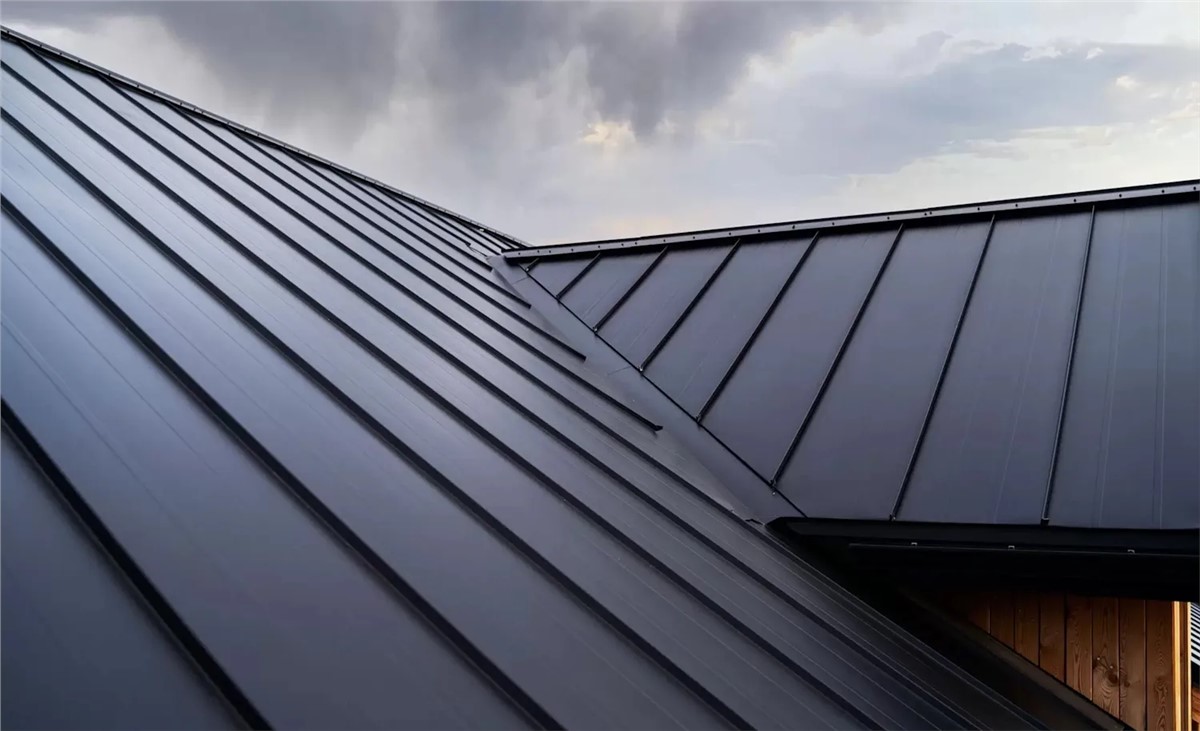
The importance of roof flashing in preserving the integrity of your home structure can't be grossly overstated. Providing essential protection against the harsh elements, roof flashing is a key component in any roofing system. Whether you’re constructing a new residential structure or restoring an older one, understanding roof flashing basics, including its types, installation process, and maintenance, is crucial. So, what is roof flashing, and why does it matter? This comprehensive guide aims to answer that.
Understanding the Basics: What is Roof Flashing?
Typically, roof flashing is a thin layer of waterproof material installed to prevent water from seeping into your home. Notably, it is placed at intersections or joints of your roofing system, around vent pipes, chimneys, valleys, and skylights—all of which are common areas susceptible to leakages. While the roofing material keeps most of the water off your house, roof flashing assures extra protection to keep your home interior safe and dry.
Materials Used in Roof Flashing
Different materials can be used in roof flashing, including:
- Copper: Highly durable and desirable for its aesthetic appeal, but it's often more expensive.
- Aluminum: Another popular option due to its lightweight nature and rust resistance. However, it isn’t as strong as copper.
- Steel: Known for its strength, it's often galvanized to increase corrosion resistance.
The Role of Roof Flashing
Roof flashing serves as a barrier, diverting water away from vulnerable areas of the roof. These are often parts where water could easily infiltrate the roofing system and cause damage. Without roof flashing, houses would be far more susceptible to leaks, requiring frequent and potentially costly repairs.
Different Types of Roof Flashing
Awareness of the types of roof flashing is key to knowing what works best for your home architecture. Here are some common kinds:
Valley Flashing
Shaped like the letter 'W', this is used in the valleys of roofs, a common area for water collection.
Drip Edge Flashing
Installed at the edge of the roof, it guides water into the gutters and away from the home's structure.
Step Flashing
Used around chimneys or dormers, these pieces overlap in the shape of stair steps to guide water away.
Installation and Maintenance of Roof Flashing
The installation and maintenance of roof flashing are crucial elements in safeguarding your home structure. Lack thereof can result in leaks and structural damage.
Installation Process
Professional roofers apply flashing as part of a roofing installation or replacement. The complexity of the process varies depending on the kind of flashing and the area of installation. While DIY installation can be tempting, it is recommended to enlist professionals to avoid missing vital steps or executing them wrongly.
Regular Maintenance
A regular maintenance routine is necessitous for a longer-lasting roof. Watch out for signs of wear and tear such as corrosion or tears in the material. Also, look for any loose areas of flashing, as these can allow water to enter your home. Engaging a roofing professional for regular inspection and maintenance can help detect and fix any minor issues before they escalate into serious problems.
The Bottom Line
The importance of roof flashing should not be underestimated. By providing an extra layer of protection against the elements, it helps to extend the lifespan of your rooftop. Though it's a small part of your overall roofing system, its role is essential in keeping your home safe and dry.
Always Consult an Expert
While this guide provides a comprehensive overview, each home is different, with unique requirements. If you're considering installing, replacing, or repairing roof flashing, it's always best to consult with an experienced roofing professional. They can help assess your individual needs and provide advice tailored to your home's structure and environment.
Frequently Asked Questions about Roof Flashing
What is the purpose of roof flashing?
Roof flashing serves an imperative part in keeping your property dry. It's expertly set on the joints and valleys of a roof to direct away water and prevent it from penetrating your home. Without roof flashing, your roof would be significantly more prone to water damage and leakage.
What kinds of materials are used for roof flashing?
Roof flashing can be created out of a variety of materials. Commonly utilised materials include aluminum, copper, lead, galvanized steel, and even rubber or plastic for certain applications. The material type will chiefly depend on the roof type, climate, and budget.
How often should roof flashing be replaced?
The lifespan of roof flashing largely depends on the material used and the weather conditions in your region. However, typically, roof flashing should be replaced when a new roof is installed, which is usually every 20-25 years. Nonetheless, it's recommended to regularly check for any signs of damage or leakage to maintain its effective water-proofing capabilities.
Can I install roof flashing myself?
Installing roof flashing may seem straightforward, but it's a task that requires particular expertise to ensure it's done properly and effectively. Although you might feel tempted to make it your next DIY project, it's strongly recommended to hire a professional roofer. Incorrectly installed flashing can lead to serious water damage to your property.
How is roof flashing installed?
Roof flashing installation typically involves the process of measuring and cutting pieces to fit the required areas of your roof. The flashing is then placed over the joints or valley and securely fastened. Both the underlayment and shingles are laid over the flashing. Then, to ensure complete protection, a sealant is applied. This task should be done by an experienced professional for maximum efficacy.
Can damaged roof flashing be repaired?
Yes, damaged roof flashing can generally be repaired, depending on the severity of the damage. Minor issues such as small cracks or loose flashing can often be fixed effectively. However, if there is significant damage or the flashing is extensively deteriorated, it may be necessary to replace the flashing entirely.
What are common issues with roof flashing?
Some common issues with roof flashing include corrosion, cracking, loosening, or poorly installed flashing that leads to water seepage. These problems, if left unattended, can potentially result in significant damage to your property, including mold, mildew, and even structural damage.
How can I tell if my roof flashing needs to be replaced?
Visible signs of wear and tear, such as cracked or corroded materials, can indicate the need for roof flashing replacement. Furthermore, if you notice moisture, dampness or mold inside your property, especially around chimneys, vents, skylights, and where the roof meets the walls, that may hint towards failed or damaged flashing.
How much does it cost to replace roof flashing?
The cost of replacing roof flashing depends on a variety of factors including the type of material used, the size and complexity of your roof, and labor costs in your area. Generally, you can expect to incur costs ranging anywhere from a few hundred to a few thousand dollars. It is advisable to get estimates from professional roofing contractors for an accurate cost assessment.
Pros and Cons of Roof Flashing
Pros of Roof Flashing
Leak Prevention
One of the most significant advantages of roof flashing is its ability to prevent leaks. Roof flashing offers a robust sealing solution, preventing water from entering through joints or intersections on the roofs, such as chimneys, skylights, or vent pipes. It divert waters away to the ground, securing the inner layers of the roof from moisture and damages.
Durability
Roof flashing materials such as copper, steel, aluminum, and lead-coated copper are known for their durability. They can resist various weather conditions such as heavy rain, snow, wind, and heat. Correctly installed roof flashings can last many years with minimal maintenance, providing long-term protection for your property.
Variety of Materials
Roof flashing comes in a range of materials, each with its unique properties:
- Copper: Long-lasting and corrosion-resistant but expensive.
- Aluminum: Lightweight, easy to install, and relatively cost-effective. However, it's less durable than copper.
- Steel: Heavy-duty and durable but susceptible to rust if not properly coated.
- Lead: Exceptionally long-lasting but requires special handling due to its toxicity.
Choosing the right material for your roof flashing will depend on your budget, the climate in your area, and your roof's specifics.
Cons of Roof Flashing
Installation Challenges
Though roof flashing greatly benefits a building's longevity, its installation can be rather complex. Correct installation is critical to its performance, requiring professional skills and careful attention to every detail. A poorly installed flashing may lead to more problems, like leaks and structural damage.
Material Compatibility Issues
Not all flashing materials are suitable for every type of roofing material. Mixing incompatible materials can cause faster corrosion due to galvanic action, reducing flashing's lifespan. For instance, aluminum flashing should not be used with a cement-fiber type shingle as it can lead to corrosion.
Cost
The cost of roof flashing can be a disadvantage, especially for high-quality materials like copper. While cheaper materials exist, they may not offer the same durability and may need replacement sooner, resulting in higher long-term costs.
Maintenance
While roof flashing is meant to be low maintenance, it doesn't mean it should be overlooked. Regular inspection and care are crucial to prolong its lifespan. Damages, such as punctures, rust, and detachment, need immediate repairs to prevent leakage and more severe damage.
Esthetic Concerns
Some people might find certain flashing materials unsightly. For example, certain metals might not blend well with certain types of shingle colors. Therefore, homeowners who have particular esthetic preferences need to consider this when choosing roof flashing materials.
Summary
Roof flashing plays a crucial role in any building. It ensures the home stays dry by directing water away and prevents damage that can escalate to more costly repairs. With roof flashing, our rooftops have a longer lifespan and require less maintenance due to the reduced exposure to moisture. It's safe to say that a home or building is not truly secure without proper roof flashing.
Routinely checking the condition of the roof flashing is an essential part of home maintenance. Over time, exposure to extreme weather can cause wear and tear, leading to issues like leaks. Make sure to replace them immediately when problems arise. With the right attention and maintenance, roof flashing can effectively protect your home for many years.
Overlooking the importance of roof flashing is a costly mistake for any homeowner. Though small compared to other parts of the roof, its role in preventing water damage is essential. If you want to have a sturdy and long-lasting roof, make sure to incorporate high-quality roof flashing. It's an investment that pays off in the long run, ensuring the durability of your home's crowning glory.
About Top Tier Roofing
Welcome to Top Tier Roofing, the finest roofing company in Jefferson, GA. Our dedicated, professional teams bring unrivalled roofing expertise to every project, guaranteeing high quality work at affordable prices. Famed for our dependability and exceptional services, we're proud to be Jefferson's top choice for residential or commercial roofing needs. We take great pride in being a locally-owned business contributing to the vibrancy of our beloved city. We don't just build roofs, we build trust.
Subscribe to Top Tier Roofing & Restoration's Blog





Comments